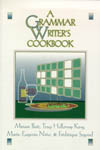

|
|
|
|

A Grammar Writer's CookbookA Grammar Writer's Cookbook is an introduction to the issues involved in the writing and design of computational grammars, reporting on experiences and analyses within the ParGram parallel grammar development project. Using the Lexical Functional Grammar (LFG) framework, this project implemented grammars for German, French, and English to cover parallel corpora. The issue of parallelism brings into focus the need to implement analyses which are crosslinguistically valid and which therefore maximize portability of the grammars' analyses to other languages. Parallelism also highlights the need for a grammar design that allows grammars to be transparent to one another across different languages. For example, the French grammar writer should be able to understand the logic underlying the implementation of the German grammar. This cookbook includes a discussion of the standard range of constructions that need to be implemented in a wide-coverage grammar, and provides sample analyses for each of the three languages. In addition, it examines the theoretical and practical issues which arose in the course of grammar development and presents the implementation of new theoretical developments in LFG. is a research scientist at the University of Konstanz. is a research associate at Xerox Palo Alto Research Center. is a doctoral student in the Department of Linguistics at Stanford University. is a researcher at Xerox Research Centre for Europe within the Multilingual Theory and Technology (MLTT) team. Contents
Part I The Grammars: General AnalysesPart II Grammar Engineering4/15/99 ISBN (Paperback): 1575861704 (9781575861708)
Subject: Linguistics; Grammar—Data Processing; Computational Linguistics
|
Distributed by the
University of Chicago Press |
|
pubs @ csli.stanford.edu
|
CSLI Publications
Stanford University Cordura Hall 210 Panama Street Stanford, CA 94305-4101 (650) 723-1839 |